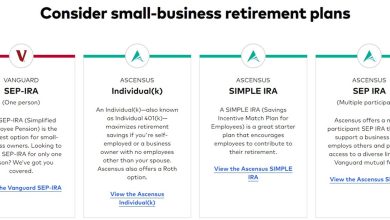8 Things to Know About Your ESPP

Some companies offer employee stock purchase plans, or ESPPs, as an employee benefit. Several of my friends that are in executive roles get access to ESPPs as part of their benefits package. Many of them are actually required to participate as the company believes it make them have “skin in the game” at the company.
In all of their cases, they can purchase shares of the company at a decent discount, which is how it benefits them as an employee.
Though not as popular as health insurance and 401(k) plans, they can be a valuable source of additional income to supplement your regular earnings.
Here are eight things to know about your ESPP if your employer offers one.
Table of Contents
- 1. What Is an ESPP?
- 2. How Does an ESPP Work?
- 3. Discounts and Lookback Periods
- 4. What Is the ESPP Maximum Contribution?
- 5. ESPPs Come in Qualified and Non-Qualified Plans
- 6. How Are Employee Stock Purchase Plans Taxed?
- 7. You Can Lose Money on an ESPP!
- 8. Glossary of Important ESPP Terms
- Is an Employee Stock Purchase Plan Worth It?
1. What Is an ESPP?
An employee stock purchase plan allows employees to purchase stock in the employing company, often under favorable terms. Depending on how generous those terms are, the employee has the potential to realize an immediate gain on the sale of the stock purchase.
Because it involves the purchase of company stock, the employer must be a publicly listed and traded company.
The employer may provide an ESPP to encourage ownership of company stock — giving employees an incentive since they will be owners (“skin in the game”).
2. How Does an ESPP Work?
Employees are permitted to contribute annually, using either a flat dollar amount or a percentage of compensation. The IRS sets an upper limit on the dollar amount of ESPP contributions, but the employer can impose an even lower limit.
Employees must usually be employed with the company for a set minimum amount of time, as determined by the employer. Participation is open to all employees.
As the employee contributes to the plan, they will build up funds to participate in stock offerings as they are made available.
There are three important dates/timeframes in ESPP stock offerings:
- Offering date: The date the stock is initially offered.
- Offering period: When a stock offer is available for purchase by plan participants.
- Purchase date: The date the stock is eligible for sale, and the employee purchases the stock offered.
Employers can set varying offering terms, but a common offering period is two years, with purchase dates set every six months. This will allow employees to participate in up to four purchases within the same offering.
However, no purchases will be permitted after the offering date until the first purchase date is reached or unless the employer allows purchases to be made immediately.
While employees can accumulate funds in an ESPP, they are not required to purchase stock under each offer. Unused funds can be withdrawn from the plan anytime and without tax consequences.
✨ Related: ESOP vs. ESPP: What You Need to Know
3. Discounts and Lookback Periods
A common feature of employee stock purchase plans are discounts and lookback periods.
Many employers offer employees a discount to purchase company shares through the plan. This discount can be as much as 15%. For example, an employee could buy a company’s stock with a value of $100 for just $85.
Not only does this enable the employee to get a preferred purchase price on the stock, but it also holds the potential for an instant profit if the employee decides to sell the shares immediately.
An ESPP may also offer a lookback period, during which the employee can purchase the stock at a price based on either the offering date or the purchase date, whichever is lower.
It’s also possible that a plan offers both a discount and a lookback period, which could potentially give the employee a double advantage when purchasing shares.
4. What Is the ESPP Maximum Contribution?
The ESPP limit is $25,000 per year for all employees, but there is a bit of a complication.
Since the employee can purchase the stock at any time during the offering period, there is a real potential for the stock price to change. For that reason, the annual contribution is typically based on the fair market value of the stock at the beginning of the offering.
For example, if the share price is $100 at the beginning of the offering period, the employee will be limited to purchasing no more than 250 shares (250 X $100).
However, a complication arises if the value of the stock falls subsequent to the initial offering date.
For example, if the share price were to fall to $50 during the offering period, the employee would be able to purchase 500 shares of stock based on the $25,000 annual contribution.
But based on the fair market value of the stock at the initial offering, the employee would technically be purchasing $50,000 worth of stock (500 shares at the original fair market value of $100 per share).
To prevent that from happening, the employee would likely be limited to the purchase of no more than 250 shares based on the original fair market value, resulting in the disbursement of only $12,500 (250 shares at the then-current market value of $50).
That said, the employer may reduce the maximum contribution by the allowable discount. For example, if the ESPP provides a 15% discount on purchases, the annual contribution to the plan may be reduced to $21,250 ($25,000 X 85%).
This is not a problem when the value of the stock rises after the initial offering since the employee can purchase no more stock than he or she has funds in the plan.
Important Tax Implications on ESPP Contributions
Unlike contributions to retirement plans, there is no tax-favored treatment of your annual ESPP deduction/contribution. Participation in the plan is accomplished with after-tax earnings only.
In addition, an employer has the right to set limits within an ESPP that are below the $25,000 maximum IRS contribution limit. That can be based either on a flat dollar amount — say, $15,000 — or a percentage of total compensation. For example, an employer may set a percentage limit of no more than 20% of total compensation.
You should also be aware that while your employer will withhold income tax for stock price discounts under non-qualified plans, there is no provision for withholding for any capital gains generated.
Depending on the size of the capital gains your participation generates, you may need to make tax estimates to the IRS.
If you regularly participate in an ESPP, we strongly recommend you engage the services of a certified public accountant (CPA) or other tax professional to make sure you adequately cover your liability with the IRS and your state tax authority.
5. ESPPs Come in Qualified and Non-Qualified Plans
Under a qualified plan, the offering period must be limited to no more than three years. The maximum share price is also limited, and the plan itself must be approved by the company’s shareholders.
There is a tax advantage to participation in qualified plans. No tax liability is incurred until the stock purchase is sold. That will make a bit more sense after we discuss the tax consequences of non-qualified plans.
Non-qualified plans have fewer restrictions than qualified plans. Like stock purchased through a qualified plan, stock purchased through a non-qualified plan is subject to capital gains tax in the year in which the stock is sold.
However, if the plan offers a purchase discount, the dollar amount of the discount will become immediately taxable as ordinary income.
For example, if you buy company stock at $100 per share, with a 15% discount, $15 of each share purchase will be immediately taxable as ordinary income. If you purchase 100 shares, you will be taxed on the benefit provided by the 15% discount provided.
This liability is calculated as follows:
$100 share price X 100 shares purchased =
$10,000 X 15% discount = $1,500
The $1,500 tax liability will be subject to your ordinary income tax rate and paid at the time the stock is purchased through payroll withholding. Taxes will be withheld similar to regular pay.
6. How Are Employee Stock Purchase Plans Taxed?
Let’s start by summarizing what we’ve already covered:
- Contributions to an ESPP are not tax-deductible.
- Stock price discounts provided through non-qualified plans are taxable as ordinary income at the time the stock is purchased.
- Stock price discounts provided through qualified plans are not taxed at the time the stock is purchased.
The last two points require some additional explanation.
If you receive a discount on the purchase of stock through a qualified plan, your “basis” (cost of the stock purchased) will be the discounted stock price. If the fair market value of the stock is $100, and you pay $85 after a 15% discount, your basis will be $85, not $100. That means any gain on the sale of the stock above the discounted price ($85) will be taxable.
In a non-qualified plan, your basis in the stock will be the fair market value, not the discounted price. This is because you will have already paid tax on the amount of the discount, so the IRS recognizes the fair market value of the stock at the time of purchase as the basis. This will result in a lower taxable gain on the sale of the stock than would be the case if the discount was taken into account.
Short-term vs. Long-term Capital Gain
Under either plan, you will be required to pay tax on any gain on the sale of the stock purchased. Exactly how the gain will be treated will depend on whether it is determined to be a short-term capital gain or a long-term capital gain.
- If the stock is sold one year or less after purchase, it’s considered a short-term capital gain and subject to your ordinary income tax rate.
- If it’s sold more than one year after purchase, it will be considered a long-term capital gain. That means the gain will be subject to the maximum long-term capital gains tax rate of 20%.
7. You Can Lose Money on an ESPP!
Even though ESPPs stack the deck in favor of participating employees, it is still possible to lose money because stock prices change. The most common scenario is purchasing stock in the plan and retaining it long-term. If the stock price falls and you sell, you will incur capital loss.
If you do have a capital loss, it can be written off against other capital gains you earn in the same year. If you do not have capital gains, the IRS allows you to write off up to $3,000 per year against other income and then carry any excess loss into future years.
You will then have the option to either write off the full amount of the loss against capital gains or take a deduction for just $3,000 each year until the full amount of the loss has been accounted for.
This scenario is possible even though the stock is purchased at a discount. For example, you may purchase company stock at $100 per share, with a 15% discount ($85 net). But you can still incur a loss if you sell the stock at a price below $85.
The most reliable way to avoid losing money with an ESPP is to sell the stock immediately upon purchase (known as a quick sale). In that way, you will benefit from the price discount on the same day the stock is purchased.
This strategy will make more sense with a higher discount, such as 10% to 15%. It may not make sense if the discount is only 5%.
8. Glossary of Important ESPP Terms
The following are important words and terms to know about your ESPP:
- Enrollment period. This is the window of time employees have to sign up for the ESPP and its next offering. If that date passes, you must enroll when the next offering is made.
- Deferred compensation. Though this term doesn’t specifically refer to ESPPs, it does include them because ESPPs represent compensation earned in the future.
- Qualifying disposition. These are dispositions of stock under a qualified ESPP. As mentioned earlier, offerings under qualified plans require shareholder approval.
- Disqualifying disposition. This refers to stock dispositions under non-qualified plans. The employer will report the dollar amount of the discount on the stock purchase as ordinary taxable income in the year the purchase is made.
- Purchase price. This is the price the employee pays for the stock at purchase. It can be either the fair market value of the stock at the time of purchase or the discounted price if one is offered.
- Quick sale. This is when stock purchased through an ESPP is immediately sold to collect the benefit of the discount offered on the purchase. It provides an instant profit to the employee.
Is an Employee Stock Purchase Plan Worth It?
If you have the funds available in your paycheck, participating in an employee stock purchase plan is almost always worthwhile. This is especially true if you can purchase the stock at a discount or through a lookback period, enabling you to buy shares at an advantageous price.
However, none of that means participating in an ESPP should be automatic. Unlike 401(k) plan contributions, ESPP contributions are made with after-tax income. That means ESPP contributions take a bigger bite out of your net pay than 401(k) contributions will.
This will directly reduce the money you have available to live on. If you don’t have any extra in your paycheck, or if participation in the plan will leave you with a tight budget, it may not be the right choice.
If cash flow is a problem because of the contributions, a workaround is available through an ESPP-dedicated service known as Benny. They will advance you the ESPP contribution for each paycheck by depositing the funds into your bank account. Once you purchase and sell company stock, you’ll repay the advance.
Benny charges a fixed interest rate that will be only a fraction of the gain you’ll earn on the stock sale.
If you take advantage of Benny, there will be no reason not to participate in your employer’s ESPP. After all, it’s found money, and you owe it to yourself to pursue it.
Other Posts You May Enjoy:
Vanguard Sells Retirement Accounts to Ascensus
Vanguard has sold nearly all of its retirement accounts (except the SEP-IRA) to Ascensus. We use a Solo-401(k) at Vanguard so we break down what this changes looks like to us what we will do next.
What is an Interval Fund?
Interval funds are closed end funds that limited redemptions to set periods – this gives them the ability to invest in more complex instruments. But should you be investing in these types of funds?
What Happens When An AcreTrader Farm “Fails”
One of my first AcreTrader investments is running into some trouble and looking for a way out. See how AcreTrader handles it and what happens to a California almond farm.
Best Solo 401(k) Providers
A solo 401(k) is a retirement savings plan for self-employed people with no full-time employees. It allows them to save for retirement using pre-tax contributions while benefiting from the same tax advantages in regular 401(k) plans. Here are some of the top solo 401(k) providers available today.

About Kevin Mercadante
Since 2009, Kevin Mercadante has been sharing his journey from a washed-up mortgage loan officer emerging from the Financial Meltdown as a contract/self-employed “slash worker” – accountant/blogger/freelance blog writer – on OutofYourRut.com. He offers career strategies, from dealing with under-employment to transitioning into self-employment, and provides “Alt-retirement strategies” for the vast majority who won’t retire to the beach as millionaires.
He also frequently discusses the big-picture trends that are putting the squeeze on the bottom 90%, offering workarounds and expense cutting tips to help readers carve out more money to save in their budgets – a.k.a., breaking the “savings barrier” and transitioning from debtor to saver.
Kevin has a B.S. in Accounting and Finance from Montclair State University.
Opinions expressed here are the author’s alone, not those of any bank or financial institution. This content has not been reviewed, approved or otherwise endorsed by any of these entities.




